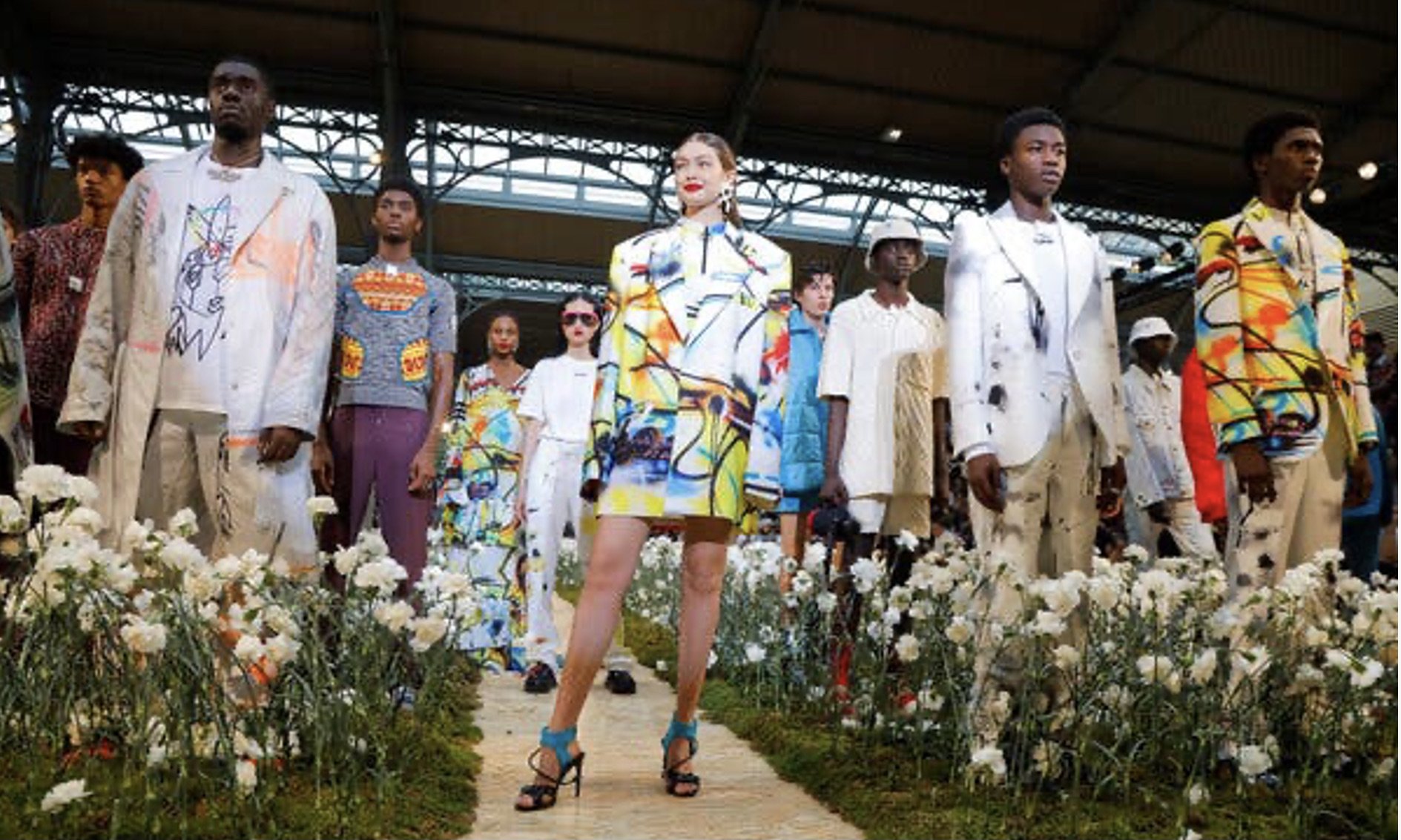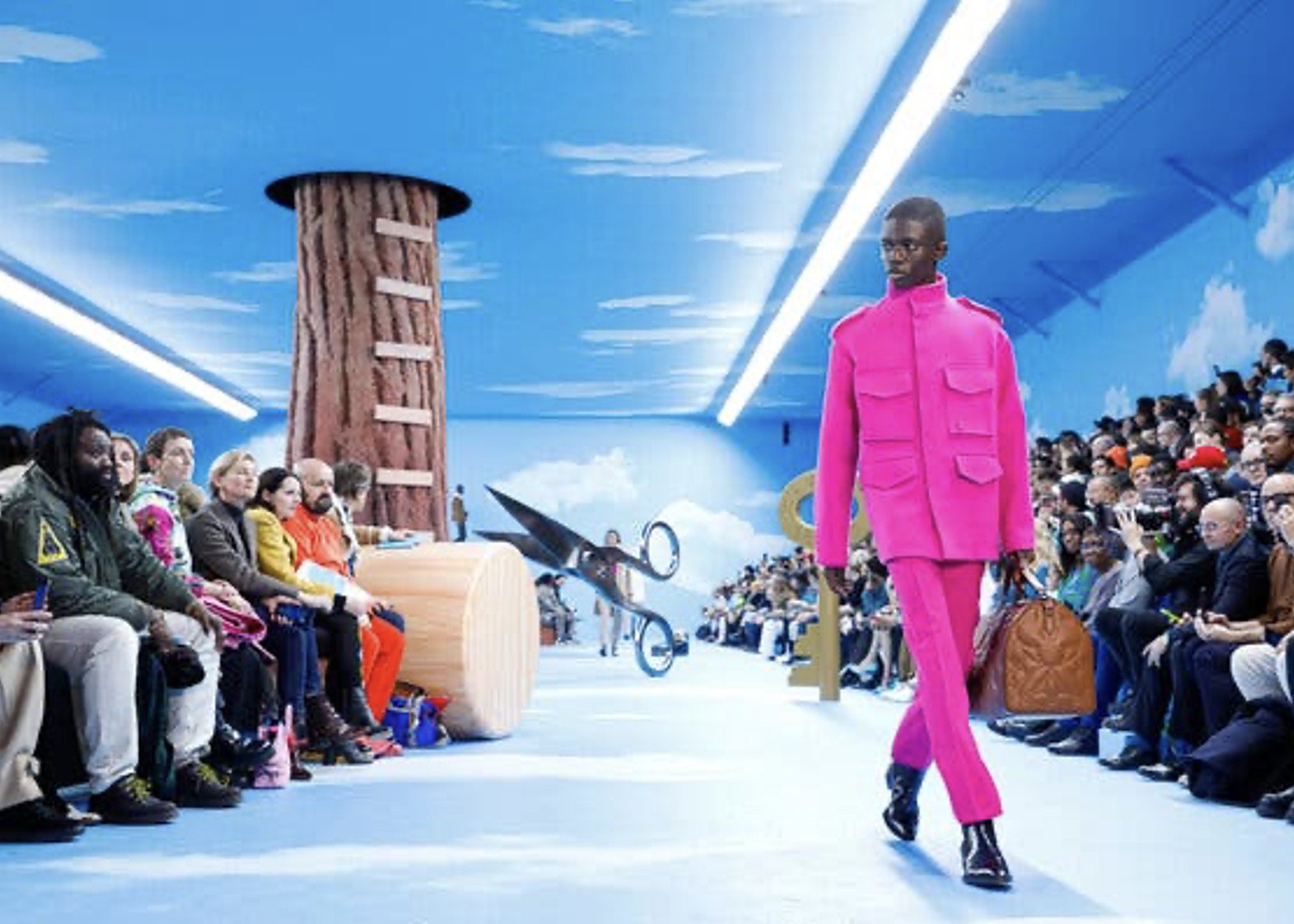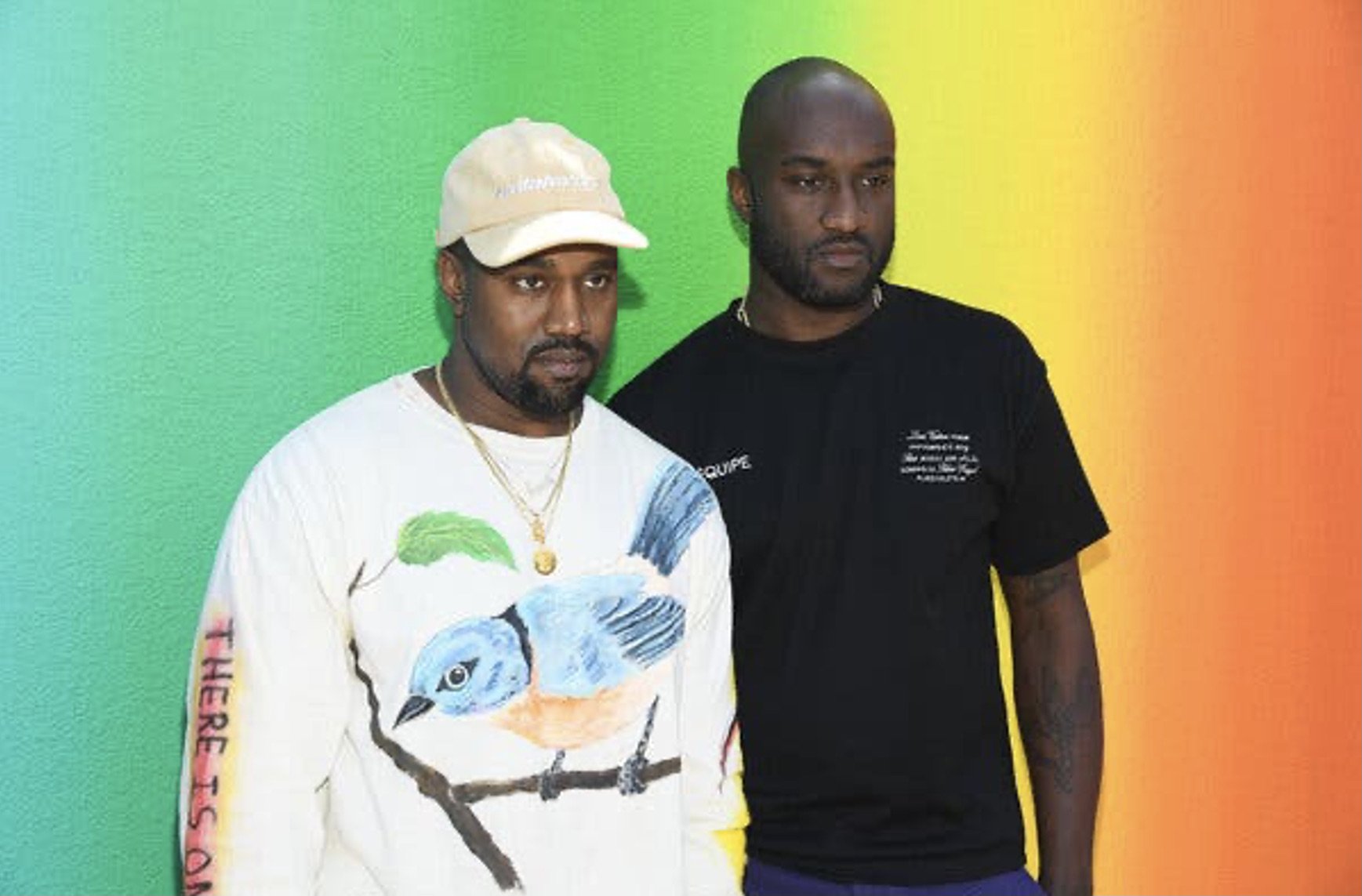Vale Virgil Abloh
Vale Virgil Abloh
September 30, 1980 – November 28, 2021
We are devastated to announce the passing of our beloved Virgil Abloh, a fiercely devoted father, husband, son, brother, and friend. He is survived by his loving wife Shannon Abloh, his children Lowe Abloh and Grey Abloh, his sister Edwina Abloh, his parents Nee and Eunice Abloh, and numerous dear friends and colleagues. Virgil Abloh Instagram Account
Virgil Abloh, Path-Blazing Designer, Is Dead at 41
His expansive approach to design inspired comparisons to artists including Andy Warhol and Jeff Koons. For him, clothes were totems of identity Acknowledgement: By Vanessa Friedman The fashion director and chief fashion critic for The New York Times. Published NY Times Nov. 28, 2021 Updated Nov. 29, 2021
Virgil Abloh, the barrier-breaking Black designer whose ascent to the heights of the traditional luxury industry changed what was possible in fashion, died on Sunday in Chicago after a two-year battle with cardiac angiosarcoma, a rare cancer. He was 41.
His death was confirmed by his family.
The artistic director of Louis Vuitton men’s wear as well as the founder of his own brand, Off-White, Mr. Abloh was a prolific collaborator with outside brands from Nike to Evian, and a popular fashion theorist whose expansive and occasionally controversialapproach to design inspired comparisons with everyone from Andy Warhol to Jeff Koons.
Mr. Abloh transformed not just what consumers wanted to wear, bridging hypebeast culture and the luxury world, but what brands wanted in a designer — and the meaning of “fashion” itself.
Off-White, spring 2020.Credit: Valerio Mezzanotti for The New York Times
For him clothes were not garments but fungible totems of identity that sat at the nexus of art, music, politics and philosophy. He was a master of using irony, reference and the self-aware wink (plus the digital world) to re-contextualize the familiar and give it an aura of cultural currency.
“Everything I do is for the 17-year-old version of myself,” his wife quoted him as saying in an Instagram post. He believed deeply, she wrote, “in the power of art to inspire future generations.”
“Virgil was not only a genius designer, a visionary, he was also a man with a beautiful soul and great wisdom,” Bernard Arnault, the chairman of LVMH Moët Hennessy Louis Vuitton, said in a statement.
Louis Vuitton, fall 2020 Credit: Valerio Mezzanotti for The New York Times
For Mr. Abloh, clothes were fungible totems of identity that sat at the nexus of art, music, politics and philosophy.
A workaholic who maintained a punishing schedule and moonlighted as a DJ and a furniture designer, Mr. Abloh nevertheless seemed to glory in having his fingers in as many pies as possible. Indeed, he referred to himself not as a designer but as a “maker,” in acknowledgment of his own omnivorous creative mind.
Just last July, he had been promoted to a new position within LVMH that would allow him to work across the group’s 75 brands, making him the most powerful Black executive in the most powerful luxury group in the world.
It was a non-traditional job for a non-traditional personality who was more interested in carving a new path in an old industry than following in anyone’s footsteps.
“Virgil is incredibly good at creating bridges between the classic and the zeitgeist of the moment,” Michael Burke, chief executive of Louis Vuitton, told The New York Times when Mr. Abloh was named to the luxury brand.
Ikram Goldman, the owner of an eponymous Chicago boutique, described him as a “hero.”
Virgil Abloh was born in Rockford, Ill., on Sept. 30, 1980, to Nee and Eunice Abloh, Ghanaian immigrants, and grew up immersed in skate culture and hip-hop.
Though he did not formally study fashion — he studied civil engineering at the University of Wisconsin-Madison and received a master’s degree in architecture from the Illinois Institute of Technology — his mother was a seamstress, and she taught him the basics of her trade.
Kanye West and Mr. Abloh after his first Louis Vuitton men’s wear show in Paris in 2018. Credit: Pascal Le Segretain/Getty Images
When he was 22 Mr. Abloh met Kanye West. That relationship set him on the road to Paris when, in 2009, Mr. West signed a deal for a sneaker collaboration with Louis Vuitton, and he and his creative team, including Mr. Abloh, headed off for fashion week and became the talk of the season. (A group photo of Mr. West, Mr. Abloh and their collaborators outside a show went viral online and was even satirized on “South Park.”)
“Streetwear wasn’t on anyone’s radar, but the sort of chatter at dinners after shows was like ‘Fashion needs something new. It’s stagnant. What’s the new thing going to be?’ That was the timeline on which I was crafting my ideas,” Mr. Abloh later told GQ. That was also when he and Mr. West began a six-month internship at Fendi, making $500 a month, and learning the business from the inside out.
In 2010 he became creative director of Donda, Mr. West’s creative incubator, helping turn Mr. West’s ideas into actuality (his laptop was described by the rapper Pusha T as “a library of everything that was aesthetically beautiful and relevant”).
Two years later Mr. Abloh and two other men he had met through Donda, Mr. West’s creative incubator, teamed up to create Been Trill, a DJ and creative collective. That later mutated into a brand called Pyrex Vision, originally conceived as an art project with clothes, which then became Off-White — a twisty, collaborative creative journey that became a trademark of Mr. Abloh’s, along with his use of quotation marks and winking allegiance to what he called in The New Yorker “the three percent rule” and in a Harvard lecture “cheat codes”: the idea that you can take an existing design and change it just a bit, and it will qualify as new.
To that end, he brought his runway shows to Paris, applied for the LVMH prize for young designers (he was a finalist in 2015), and embraced both women’s and men’s wear.
Though his work met with a mixed critical reception and raised eyebrows among the designer community, some of whom considered it more “copying” than “creative,” his influence was unarguable, spreading in part through his early and astute embrace of Instagram (at his death he had 6.5 million followers). Rather than go to the establishment, he understood he could go straight to consumers, and then the establishment would come to him. By 2018, Louis Vuitton had. Not long after, Time magazine named Mr. Abloh one of the most influential people of the year.
Mr. Abloh greeted the crowd at the Off-White spring 2019 men’s wear show in 2018. Credit: Valerio Mezzanotti for The New York Times
In 2019, Mr. Abloh — who seemed to be always in the air between Illinois, where his family continued to live, and Paris — was briefly grounded due to what was attributed to “exhaustion.” While that may have kept him in one place, it didn’t seem to slow him down at all.
He opened a major exhibit at the Museum of Contemporary Art in Chicago titled “Figures of Speech,” and the next year, after the social justice protests of 2020, established the “Post-Modern” Scholarship Fund, raising $1 million to encourage Black students in fashion. Earlier this year LVMH increased its stake in Off-White to 60 percent, a sign that the brand had the backing to move to the next level. In May, he dressed Spike Lee for his role as Grand Jury president at the Cannes Film Festival in bright pink and sunset-toned suits, and made him the talk of the festival.
Even as Mr. Abloh was hospitalized with the illness that would kill him, he had plans to travel to Miami for a Louis Vuitton men’s wear show.
He is survived by his wife Shannon Abloh, his children Lowe Abloh and Grey Abloh, his sister Edwina Abloh, his parents — and a legacy he identified during his first Louis Vuitton show, held in the gardens of the Palais Royale in front of an audience that included Mr. West, Rihanna and ASAP Rocky, as well as 1,500 students.
“There are people around this room who look like me,” he said to The New York Times. “You never saw that before in fashion. The people have changed, and so fashion had to.” He made it so.
Virgil Abloh’s Celebrity Influence.
Here are some memorable moments from his barrier-breaking career
Acknowledgement: Vanessa Friedman reporting on a fashion change maker. Published NY Times Nov. 28, 2021 Updated Nov. 29, 2021
Jamie Mccarthy/Getty Images
The Off-White leather bustier and wide-legged pants that Joan Smalls wore to the 2016 MTV Video Music Awards put her on many best-dressed lists, showing that a brand labelled as street wear could be red-carpet elegant.
Nina Westervelt for The New York Times
Abloh often rebelled against the categorization of Off-White as street wear. Case in point: the tailored coat dress Bella Hadid wore to the 2017 Council of Fashion Designers of America awards
Ben Solomon for The New York Times
Abloh rejected the idea that his work could be put in a box: See the Off-White x Nike tennis tutu he designed for Serena Williams at the 2018 U.S. Open. Williams recalled seeing the tutu as “the moment I’ve been waiting for.”
Frazer Harrison/Getty Images
Timothée Chalamet instantly became a talking point when he wore a custom Louis Vuitton harness designed by Abloh to the Golden Globes in 2019. Love it or hate it, the concept of the tux would never be the same.
Valery Hache/Agence France-Presse — Getty Images
When Spike Lee made history as the first Black director to be president of the Cannes Film Festival Grand Jury, his Louis Vuitton wardrobe also made a statement on the red carpet.
Matt Winkelmeyer/Getty Images For Mrc
In November, the Korean boy band BTS chose coordinating Louis Vuitton suits for the American Music Awards; they had crossed over to join the brand’s group of international ambassadors earlier in the year.













